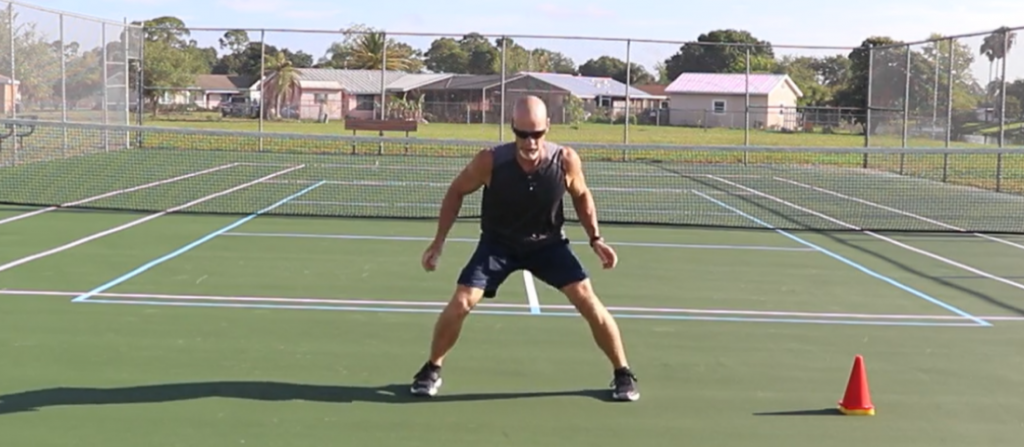I can’t tell you how much I love watching old clips of the great lateral movers in sports- Barry Sanders, Roger Federer, Steffi Graff, Mia Hamm… Of course, I love watching today’s younger athletes, as well!
The ability to create space for themselves or get to the ball quickly with one or two quick lateral steps is fascinating.
Lateral speed, the shuffle, and the lateral run have unique gait cycles.
When you coach the shuffle and lateral run, you have to understand where the force is coming from and going to. You have to understand the purpose of the leg gait cycle and how to repeat it quickly to increase momentum.
If I add a resistance band, the influence will be on power output and less on the quick return of the gait through the cycle. If my athlete is powerful but slow, the band might not be the best tool to use unless I am assistance them by pulling them through the gait cycle- therefore increasing the turnover of the gait.
If I am attempting to manage a more efficient change of direction in and out of the shuffle or lateral run, I don’t want to use a drill where my athlete must touch the floor with their hands- this slows them down and changes postures.
Instead, I would use a low box or fake throw drill to create a reactive situation where the athlete’s core region, leg plant angle and energy are quickly directed toward getting in and out of the COD.
Training the lateral run shares the lateral shuffle push-off mechanics with the linear acceleration gait cycle.
The athlete must translate laterally with the center of mass to get moving in the direction of travel, while the front side opens and prepares to push down and back like a track sprinter coming out of the blocks.. pretty cool!
If coaches understand how to help the athlete create appropriate force at the appropriate angles, increase the gait cycle speed, and load properly technically… we can impact their lateral speed and quickness.
Lastly, if you think the arms are there just for balance, you are mistaken. The arms are a significant contributor to force. By driving opposite of the leg action, the arms help increase the force being generated.
The arms move first during the take-off. They act as force producers and stabilizers through the body.
Learn the biomechanics, physics, and force generation of lateral speed and watch your athlete thrive!
I am going to highly encourage you to check out Speed Toolbox. It’s new; it’s incredible, and best of all the reviews have been super! It is one of the fastest-growing speed and performance communities out there.
The Speed Toolbox is where you will become a Speed Ambassador by learning the science, mechanics, programming, etc., to become a master of teaching multi-directional speed.
www.SpeedToolbox.com is the place to signed up and join the movement.

